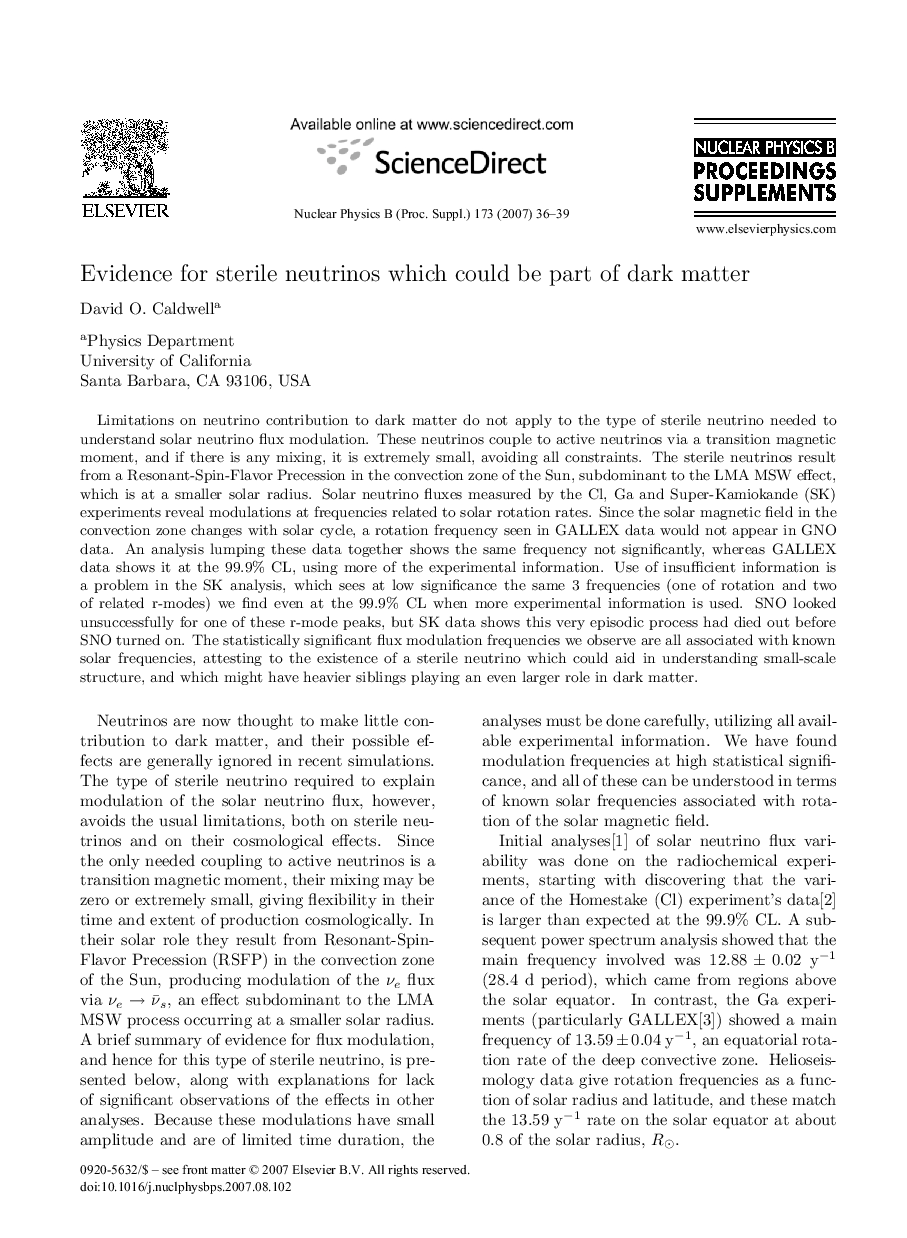| Article ID | Journal | Published Year | Pages | File Type |
|---|---|---|---|---|
| 1845162 | Nuclear Physics B - Proceedings Supplements | 2007 | 4 Pages |
Limitations on neutrino contribution to dark matter do not apply to the type of sterile neutrino needed to understand solar neutrino flux modulation. These neutrinos couple to active neutrinos via a transition magnetic moment, and if there is any mixing, it is extremely small, avoiding all constraints. The sterile neutrinos result from a Resonant-Spin-Flavor Precession in the convection zone of the Sun, subdominant to the LMA MSW effect, which is at a smaller solar radius. Solar neutrino fluxes measured by the Cl, Ga and Super-Kamiokande (SK) experiments reveal modulations at frequencies related to solar rotation rates. Since the solar magnetic field in the convection zone changes with solar cycle, a rotation frequency seen in GALLEX data would not appear in GNO data. An analysis lumping these data together shows the same frequency not significantly, whereas GALLEX data shows it at the 99.9% CL, using more of the experimental information. Use of insufficient information is a problem in the SK analysis, which sees at low significance the same 3 frequencies (one of rotation and two of related r-modes) we find even at the 99.9% CL when more experimental information is used. SNO looked unsuccessfully for one of these r-mode peaks, but SK data shows this very episodic process had died out before SNO turned on. The statistically significant flux modulation frequencies we observe are all associated with known solar frequencies, attesting to the existence of a sterile neutrino which could aid in understanding small-scale structure, and which might have heavier siblings playing an even larger role in dark matter.
